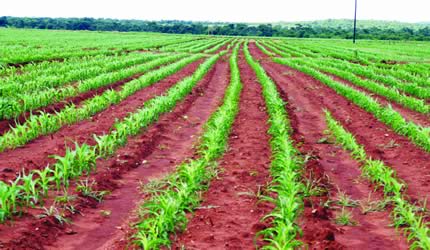Demystifying Command Agriculture

George Chisoko and Hebert Zharare—-
Whenever discussion on Command Agriculture comes up, there are high chances of confusing it with Command Economy in that the two are centrally planned with a desire for mass food production and to hedge the economy against shortages.
By definition, a command economy is a system where government determines what goods and services should be produced and the price at which the goods are sold. It is the job of government planners to do that. Essentially that is command economy.
It is economy-wide while Command Agriculture is sector-specific and in the case of Zimbabwe, is focused on boosting maize production, the country’s stable food.
Command Agriculture is an import substitution-led industrialisation concept deliberately meant to empower local producers of cereal crops and in the process boosting capacity for locals and creating employment for thousands of people in the sector.
A successful Command Agriculture also results in huge savings in foreign currency given that Government will have less pressure to import food and the money can be used to import essentials such as drugs and sponsor national capital projects.
Command Agriculture, which is the brainchild of Government, comes on the back of a successful land reform programme that has massively empowered Zimbabwean companies through forward and backward linkages.
There is no doubt that companies that supply raw materials such as fertilisers, chemicals, fuel, farming implements, machinery and seed benefited immensely through backward linkages.
From the over $500 million mobilised by Government from the market to fund Command Agriculture, surely a number of the inputs and machinery-producing firms had a fair share of the money that is likely to boost the businesses.
Through forward linkages, we are positive that the expected high maize production at the end of the season is going to trigger production on industries that heavily rely on cereal products.
Zimbabweans are optimistic that the bumper harvest envisaged will have positive spin-offs that are also expected to trigger a reduction in the prices of prices of cereal products, thereby stimulating production as companies start enjoying economies of scale.
It must be noted that in Zimbabwe we have a mixed economy where part is left to the dictates of a free market and the other is run by the Government. We are not a command economy although we have gone the route of Command Agriculture in order to attain food self-sufficiency and replenish the Strategic Grain Reserve.
What the Government has simply done, in light of persistent droughts and the effects of the illegal sanctions imposed by the West, is to take command of agriculture as panacea to food challenges. When one looks at Command Agriculture, it is clear that the Government has taken control of agriculture, particularly maize production, and when you take command of something, you go out of your way to ensure its success.
And that is what we are seeing with the Government. Fortunately, the programme has found takers in the form of thousands of farmers, who voluntarily embraced the scheme by contracting themselves to produce five tonnes of maize per hectare.
With Command Agriculture, maize production, which for years had plummeted owing to a variety factors, should rebound to the level we are able to fully satisfy domestic food requirements and sustain ourselves in the event of a drought without having to import. The objective is not only to produce enough for domestic consumption but surplus for export, thus earning the country foreign currency.
This is achievable under Command Agriculture as Government has provided everything that farmers require to be productive. In the past farmers have failed to reach their productive potential largely because of erratic rainfall and inadequate cash to buy crop inputs. Zimbabweans are inherently farmers and they still managed to produce under difficult times and now when those challenges are removed by the Government, there is no chance that they will fail.
With the heavy burden to source crop inputs, farmers never surrendered in their pursuit of agricultural production and now with Government making their life easier through the provision of seed, fertiliser, chemicals, fuel and tillage services, only the sky is the limit for them.
While a lot of activity is taking place at the farms, there are those who choose to be blind to the good work and are always on the forefront of criticising the programme.
Granted, you will always have such pessimistic minds that wish for Command Agriculture to fail so that they can rejoice. Fortunately enough, Zimbabwean farmers are much wiser and have been busy working an the farms to ensure they fulfil their contractual requirements and produce surplus maize.
It is very encouraging that farmers do not view Command Agriculture as a programme for Government but rather as their programme. While self-sufficiency is the objective of the scheme, we cannot ignore the extent to which it would improve the standards of living of the farmers. Command Agriculture has presented farmers with the opportunity to make money. Farmers who had written themselves off for the 2016-17 because they did not have money to buy inputs now boast a thriving maize crop and only have good words about the programme.
It is interesting to note that criticism of Command Agriculture has come from people that are not involved with the programme, not even as farmers, suppliers, extension officers but just as armchair critics whose knowledge of the scheme is through the media and friends opposed to the programme itself.
Government and farmers should not lose sleep over such critics. They can make all the noise they want and that will not stop the Command Agriculture juggernaut. Progressive minds that embraced the programme will stay focused and ensure they produce and shame the critics.







Comments